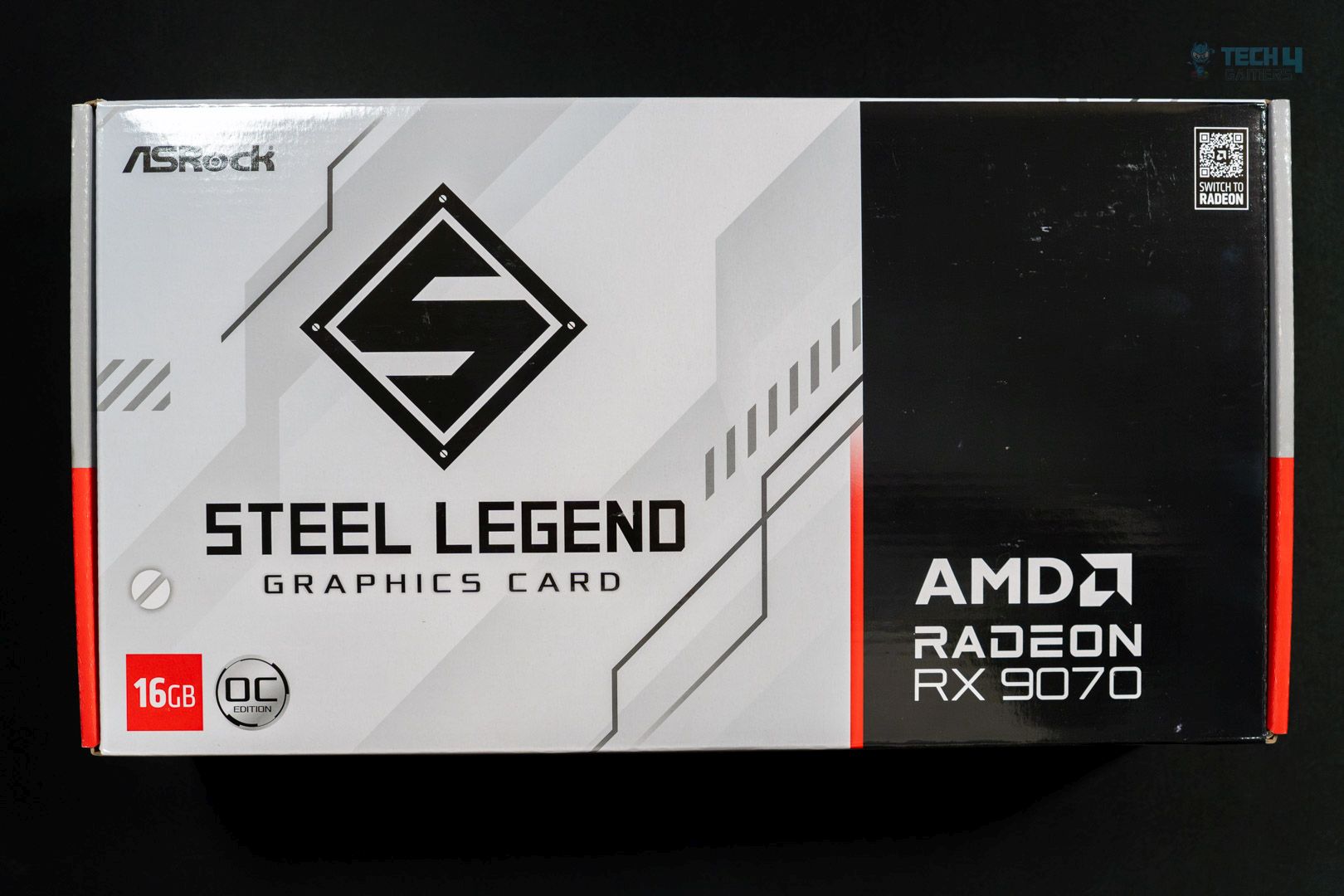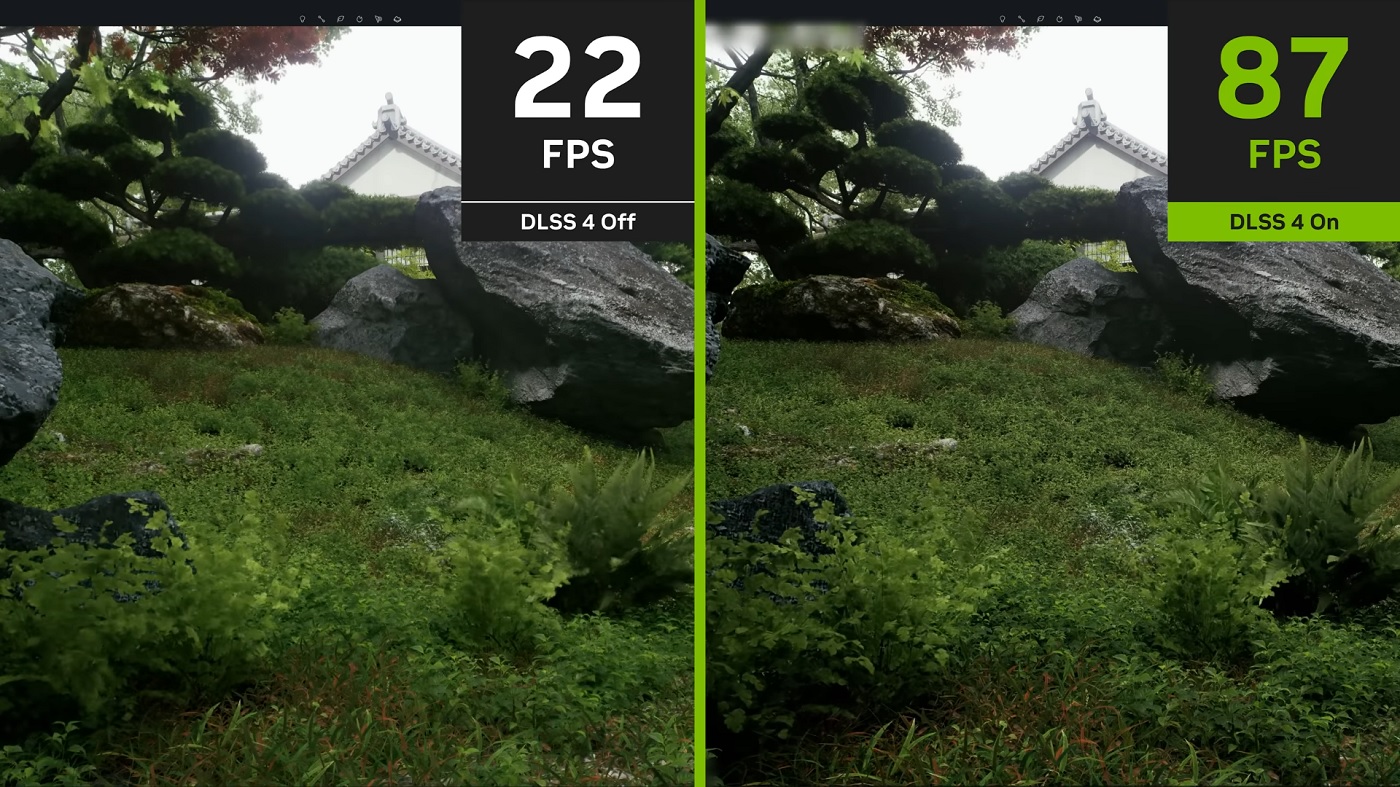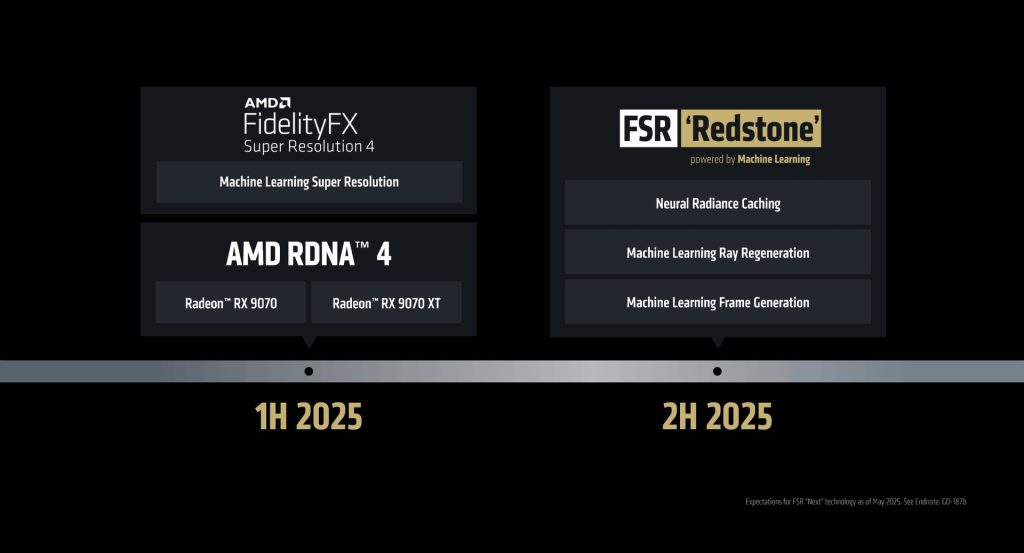- AMD’s FSR upscaling software has always been one step behind Nvidia’s DLSS suite, but the new ‘Redstone’ update will reportedly put a stop to Team Green’s dominance.
- AMD offered a sneak peek at FSR 4 Redstone during Computex 2025 where neural radiance caching along with ML Ray Gen + ML Frame Gen were teased, symbolising AMD’s renewed advancements into AI-assisted upscaling tech.
- AMD hasn’t announced an exact launch date for Redstone, instead, they merely disclosed that we can expect its release sometime in the second half of 2025.
I’ve been following AMD’s FidelityFX Super Resolution (FSR) since its debut on 22nd June 2021, and let’s be honest—it’s always been the scrappy underdog to Nvidia’s Deep Learning Super Sampling (DLSS).
But at Computex 2025, AMD dropped a bombshell: FSR 4 “Redstone” is coming, and it’s bringing the big guns.
For the first time ever, AMD is embracing machine learning in its upscaling tech.
That’s right—after years of insisting that a purely spatial upscaler was good enough, AMD is finally admitting what we all knew: AI is the future.
And Redstone? It might just be the DLSS killer we’ve been waiting for.
FSR 4 Was Just The Beginning
Before we dive into Redstone, let’s rewind.
FSR 4 launched alongside the Radeon RX 9000 Series (specifically the RX 9070 and 9070 XT) in Q1 2025, with 30 supported games at launch.
Fast-forward to June, and AMD announced at the RX 9060 XT launch event that the list had doubled to 60 titles. That’s progress, but still a far cry from DLSS’s near-ubiquitous support.

But here’s the thing—FSR 3 was still based on traditional upscaling. It worked, sure, but it lacked the AI-powered finesse of DLSS.
That’s where FSR 4 came in, exhibiting an AI-assisted upscaling algorithm that promised advancements in image quality, frame generation, and captured frames with the help of features like Radeon Image Sharpening 2.0, AMD Fluid Motion 2.0, the AMD Image Inspector, and a re-architected encoder for frame captures and logging.
But Redstone goes beyond all of that.
The Three Big Upgrades In FSR 4 Redstone
AMD teased three major features for Redstone, and if these sound familiar… well, that’s because Nvidia’s been doing them for years.
But hey, better late than never, right?
1. Neural Radiance Caching
This is AMD’s answer to DLSS Ray Reconstruction.
In simple terms, it uses machine learning to improve ray-traced lighting by predicting how light should bounce and interact in a scene.
The result? More accurate reflections, shadows, and global illumination without the massive performance hit of brute-force ray tracing.
2. Machine Learning Ray Generation
This one’s a bit more technical, but think of it as AI-assisted ray tracing.
Instead of calculating every single ray path traditionally (which is extremely demanding), Redstone will use ML to predict and fill in gaps, reducing workload while maintaining visual fidelity.
3. Machine Learning Frame Generation
Ah, the big one. DLSS 4’s Multi Frame Gen has been Nvidia’s crown jewel, and now AMD is finally jumping in.

Redstone will use AI to generate entirely new frames, effectively doubling (or even tripling) your FPS in a handful of intricately optimized/supported games.
The catch? It won’t work on RDNA 3 or older cards.
Why The Sudden Shift To AI?
For years, AMD insisted that FSR didn’t need machine learning. Their argument? “It works on all GPUs!”
And yeah, that was great for compatibility, but DLSS simply looked better.
With the launch of FSR 4, AMD finally conceded: AI upscaling is superior. And with Redstone, they’re finally going all-in.
But here’s the kicker—Redstone won’t be backwards compatible.
If you’re rocking an RX 7000 Series (RDNA 3) or older GPU, you’re stuck with FSR 3.
AMD hasn’t confirmed exact hardware requirements yet, but given that FSR 4 is already RDNA 4-exclusive in its full form, it’s safe to assume Redstone will follow suit.
Team Red fans are bound to feel sore since DLSS 4 is backwards-compatible with RTX 20, RTX 30, and RTX 40 Series GPUs (although multi frame generation will remain exclusive to RTX 50 GPUs).
When Is FSR 4 Redstone Coming?
AMD was frustratingly vague about the release date, only saying “second half of 2025.”
That could mean September… or December. Knowing AMD’s history with software launches, I’d bet on Q4.
Can Redstone Actually Compete With DLSS?
That’s the million-dollar question.
On paper, Redstone sounds like a direct response to DLSS 4. But Nvidia has a multi-year head start in AI upscaling.
- Will Redstone’s frame gen be as smooth as DLSS?
- Will neural radiance caching match ray reconstruction?
- Will devs actually implement it widely?
We won’t know until it’s out, but one thing’s clear: AMD is no longer playing catch-up—they’re going head-to-head.
Final Thoughts: The Upscaling War Just Got Interesting
For years, DLSS dominated because it had no real competition. FSR was good, but not great.
With Redstone, AMD is finally stepping into the ring with fully AI-powered weaponry.
If they pull this off, Nvidia should be worried. If they don’t? Well… at least they tried.
Either way, 2025 just became the year of the upscaling arms race. Buckle up.
Thank you! Please share your positive feedback. 🔋
How could we improve this post? Please Help us. 😔
[Wiki Editor]
Ali Rashid Khan is an avid gamer, hardware enthusiast, photographer, and devoted litterateur with a period of experience spanning more than 14 years. Sporting a specialization with regards to the latest tech in flagship phones, gaming laptops, and top-of-the-line PCs, Ali is known for consistently presenting the most detailed objective perspective on all types of gaming products, ranging from the Best Motherboards, CPU Coolers, RAM kits, GPUs, and PSUs amongst numerous other peripherals. When he’s not busy writing, you’ll find Ali meddling with mechanical keyboards, indulging in vehicular racing, or professionally competing worldwide with fellow mind-sport athletes in Scrabble at an international level. Currently speaking, Ali has completed his A-Level GCEs with plans to go into either Allopathic Medicine or Business Studies, or who knows, perhaps a full-time dedicated technological journalist.
Get In Touch: alirashid@tech4gamers.com


 Threads
Threads


